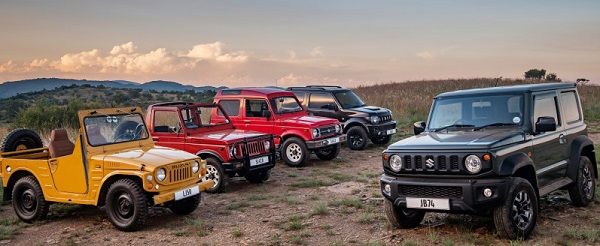
Fifty years on and the Suzuki jeep is more popular than ever

The Suzuki Jimny has become a legend in its own time. In the seventies it rewrote the 4×4 rulebook, demonstrating that bigger is not always better. And even after 50 years, in the southern African market, it is still the compact 4×4 to beat.
“The Jimny’s reliability, genuine off-road ability, comfortable cabin with all the modern amenities and low running costs have clearly served to further bolster its reputation. The award-winning styling is pretty much spot-on too. The similarities with a classic like the LJ50 is clear, yet it is modern and trendy,” said Andre Venter, divisional manager of sales and marketing at Suzuki Auto South Africa.
This year sees the popular Suzuki Jimny celebrating its 50th anniversary, after making its debut in 1970. Since then, more than three million units have been sold around the world.
The roots of the Jimny, popularly known as the Suzuki jeep, go back to 1967 when Suzuki bought the design from another Japanese carmaker, HOPE.
The ladder-frame chassis, solid axles and leaf-spring set-up were refined to improve durability and quality, and also to facilitate mass-production. A Suzuki 360cc two-stroke engine replaced the original Mitsubishi engine, and a new body rounded off the new design. Rigorous endurance testing also ensured optimal reliability. The Suzuki LJ10 (for Light Jeep 10) went on sale in 1970 – and was an instant hit.
Despite its offroad credentials, the LJ10’s road performance was horrible, managing a top speed of only 70 km/h. Also, the spare wheel road inside the cabin, reducing the number of passengers to two plus the driver.
By 1976 Suzuki introduced the LJ50. A bigger 539cc two-stroke engine was fitted and the spare wheel moved to the rear door. Top speed was increased to 100km/h – sometimes.
In 1977 the LJ80 followed with an 800cc four-cylinder, four-stroke engine. The fuel tank was increased to 40 litres which is still the same size used today.
The SJ410 was launched in 1981. It was a completely new vehicle, but the well-proven leaf suspension and live axles were retained. The engine was increased to 970cc, and power peaked at 33kW.
Two years later the SJ413 followed, with Suzuki again increasing the engine, this time to 1324cc. By the end of it’s life cycle it became clear that many customers were using their vehicles as daily runners, and only occasionally off-road. So, there was a clear shift to more on-road comfort, without sacrificing the lightweight Suzuki’s legendary off-road prowess.
In the early nineties, the front suspension became coil springs while inside, the cabin now boasted an aircon, electric windows and a tape/radio combo.
1998 saw the launch of the third-generation Suzuki jeep when it became the Jimny. By then, the little workhorse got a new coil spring front suspension, auto-locking front hubs, a dial in the cabin for selecting 2-wheel drive, 4-wheel drive and low range, and a new 16-valve 1300cc engine kicking out 63kW. Although refined in many aspects, the new model was still a very capable true offroader. This model remained largely unchanged for 20 years.
It was only in 2018 that Suzuki introduced the current generation Jimny with its beautiful retro design, and a 1500cc engine.
“Judging by the world-wide demand for the latest Jimny, this legend is far from a done deal, even after 50 years,” concluded Venter.












































